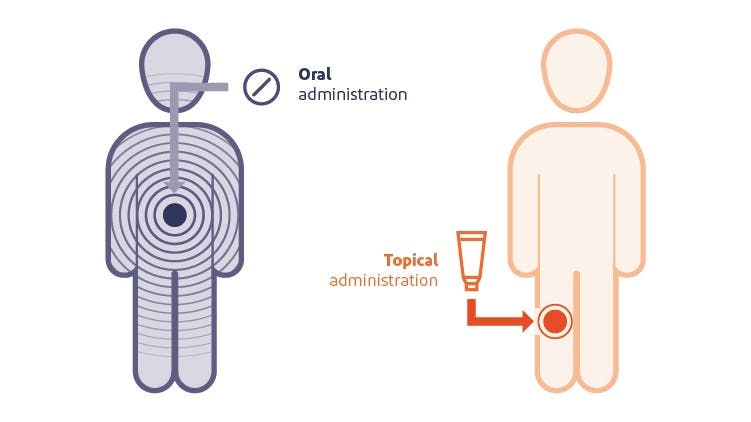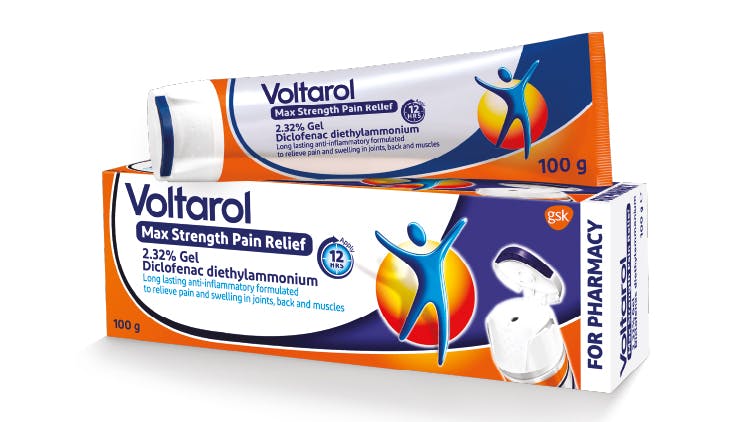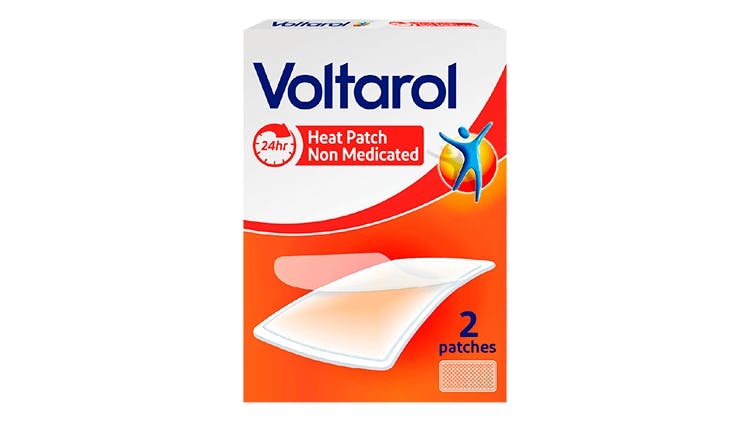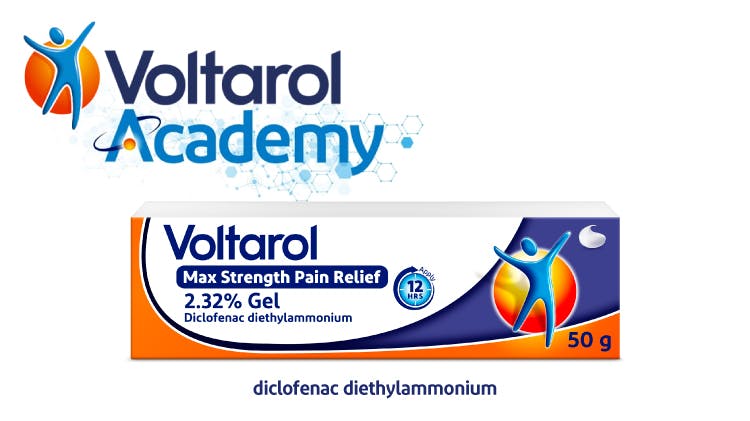Voltarol overview

Voltarol – bring back the joy of movement for your patients
The Voltarol range of products provides effective relief of body pain to help patients rediscover the joy of movement.
Voltarol – for effective relief of body pain

Diclofenac is a potent anti-inflammatory ingredient1
Most Voltarol products contain the potent non-steroidal anti-inflammatory drug (NSAID), diclofenac.1,2
This active ingredient targets pain the source of pain by reducing inflammation.1,3

Low systemic absorption, for a lower risk of systemic side effects4,5
The topical application of Voltarol Gels leads to a low systemic exposure meaning a reduced risk of systemic side effects and drug-drug interactions.4,5

Products that match patient needs
The Voltarol family of products contains a range of treatments to suit your patient's requirements, including:
- A selection of formulations – including topical gels and non-medicated patch
- Products based on either the active ingredient diclofenac or non-drug technology
- Treatments formulated specifically for common types of pain – including joint pain; sprains and strains; and back and neck pain
The science behind Voltarol

Targeting pain with the potent anti-inflammatory effects of diclofenac1
Diclofenac reduces inflammation by inhibiting prostaglandin biosynthesis through action on the cyclo-oxygenase (COX) enzymes. Diclofenac exerts its therapeutic effects primarily through inhibition of prostaglandin synthesis by COX-2. It also reduces the production of leukotrienes by inhibiting phospholipase A2 activity.3
Diclofenac not only provides pain relief but also treats inflammation – a root cause of pain.
Harnessing the pain-relieving action of heat
Topical heat treatment applied directly on the skin increases both deep tissue temperature and blood flow and provides clinically proven relief of pain.6-8
The therapeutic benefits of continuous low-level heat* are long-lasting – pain relief is still provided up to 24 hours** after the heat source is removed.6†
According to some clinical guidelines for low back pain, superficial heat is a non-pharmacological treatment with good evidence to support a pain-relieving effect.9,10†
*40°C for 8 hours per day for at least 2 days.**Up to 24 hours of pain relief in lower back pain from second day of treatment
†American Pain Society/American College of Physicians guidelines.
The Voltarol range offers pain-relief products tailored to individual patient needs

Voltarol Back & Muscle Pain Relief 1.16% Gel (diclofenac diethylammonium) for strains and sprains
Scientifically proven to relieve muscle pain, reduce inflammation and restore movement.11–13
100g pack available with no mess applicator.

Voltarol Max Strength Pain Relief 2.32% Gel (diclofenac diethylammonium) offers convenient twice daily application
With a permeation enhancer to increase penetration of diclofenac,14 it provides up to 12 hours of relief from joint pain, including the pain of osteoarthritis.15
See how Voltarol Max Strength Pain Relief 2.32% Gel can help your patients, with just twice daily topical application.

Voltarol Osteoarthritis Joint Pain Relief 1.16% Gel (diclofenac diethylammonium) for patients with osteoarthritis
As effective as oral NSAIDs for localised joint pain with a reduced risk of gastrointestinal side effects.16
See how Voltarol Osteoarthritis Joint Pain Relief Gel can help your patients with osteoarthritis.

Voltarol Heat Patch – for non-medicated relief
Deep-penetrating and long-lasting relief using continuous low-level heat therapy.6,17–19*
See how Voltarol Heat Patch can help your patients with back and neck pain
*40°C for 8 hours per day for at least 2 days.
Voltarol – for effective relief of pain
Patient care resources
Review educational materials on Voltarol products for your patients.

Voltarol Science Academy
Visit the Voltarol Science Academy & learn more about how the formulation works to provide targeted pain relief and improve joint mobility*
*In acute ankle sprain vs placebo
Conditions
Our overviews of common pain conditions explore the causes, signs, symptoms and impact of each condition, and summarise the latest evidence-based management recommendations.
